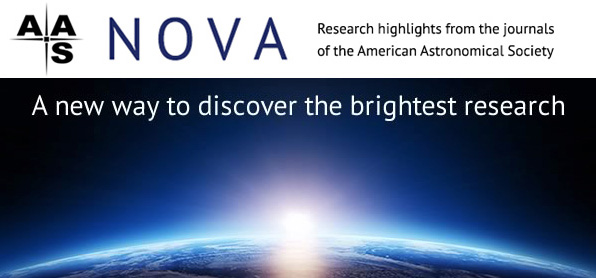Highlights from AAS Nova: 18 September - 1 October 2016

Susanna Kohler American Astronomical Society (AAS)
AAS Nova provides brief highlights of recently published articles from the AAS journals, i.e., The Astronomical Journal (AJ) and The Astrophysical Journal (ApJ), ApJ Letters, and ApJ Supplements. The website's intent is to gain broader exposure for AAS authors and to provide astronomy researchers and enthusiasts with summaries of recent, interesting research across a wide range of astronomical fields.
The following are the AAS Nova highlights from the past two weeks; follow the links to read more, or visit the AAS Nova webpage for more posts.
30 September 2016
A Planet Found by Pulsations
Thus far, most of the exoplanets we’ve discovered orbit around cool stars rather than hot ones. Recently, an unusual technique has been found to discover a planet in the habitable zone of a very hot star.
28 September 2016
Is There a Size Limit for Supermassive Black Holes?
Supermassive black holes — which often weigh in at millions to billions of solar masses — can accrete matter as they lurk at the centers of galaxies. Is there a maximum mass that these monsters can attain?
27 September 2016
Shooting for the Stars (and the Damage of Doing So)
How will the tiny spacecraft of the Breakthrough Starshot initiative fare against dust, as they speed through interstellar space on their way to Proxima Centauri? Astrobites reports on the potentially catastrophic consequences of the interstellar medium for the mission.
26 September 2016
Featured Image: Tests of an MHD Code
Creating the codes that are used to numerically model astrophysical systems takes a lot of work — and a lot of testing! Here’s a brief look at the some of the entrancing test outputs from the new DISCO code.
23 September 2016
Explaining the Birth of the Martian Moons
Were Mars’s two moons once main-belt asteroids, now captured into orbit? Or were they created when a large body slammed into Mars?
21 September 2016
Colliding Neutron Stars as the Source of Heavy Elements
Where do the heavy elements — the chemical elements beyond iron — in our universe come from? The mergers of neutron stars could be responsible.
20 September 2016
An Ocean of Magma
When rocky exoplanets form, they are initially believed to have molten surfaces. Astrobites reports on how this ocean of magma could affect a planet’s atmosphere.
19 September 2016
Building an Unusual White-Dwarf Duo
Could a white-dwarf duo have formed from a trio of main-sequence stars? Scientists explore the birth of an unusual binary system.


